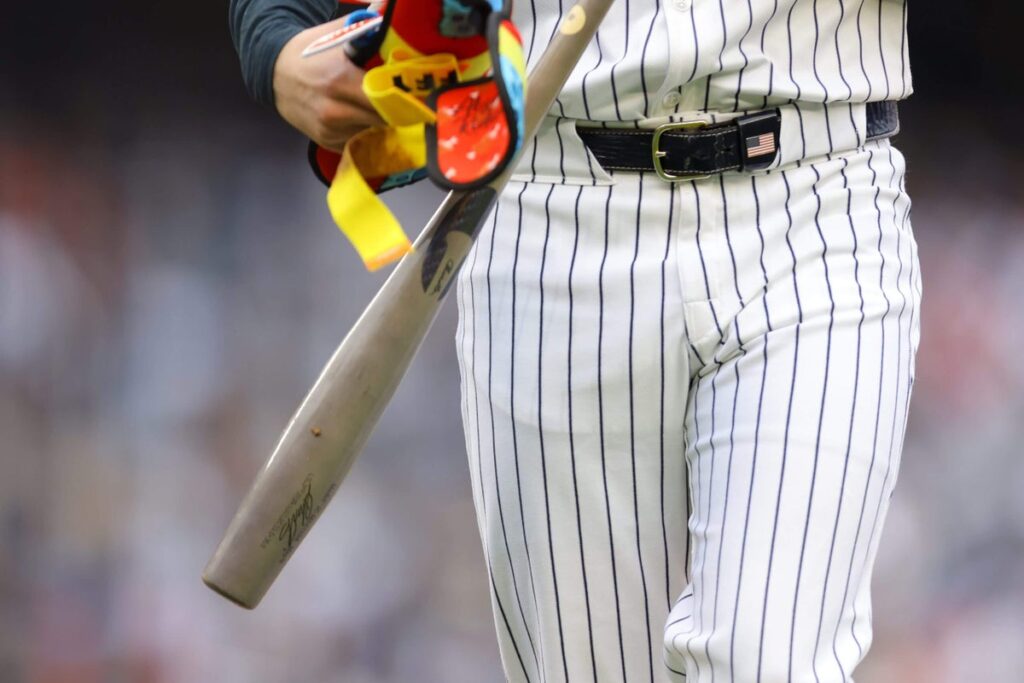
Atlanta Braves first baseman Matt Olson, a two-time All-Star and Silver Slugger, has built an impressive career swinging a traditional bat. Yet, even he took notice when the New York Yankees unleashed a barrage of home runs against the Milwaukee Brewers, drawing attention to a new type of bat shaped more like a torpedo. This innovation, developed by a former Yankees employee and MIT physicist, has sparked curiosity across Major League Baseball.
The Yankees’ power surge, which included a franchise-record nine home runs in a single game, has players and teams reconsidering their equipment. YES Network announcer Michael Kay revealed during the game that the Yankees had adjusted the bats to move more wood into the label area, aiming to increase the impact on the ball. The result was a 20-9 victory, followed by another dominant performance, tying an MLB record with 15 home runs in three games.
The Rise of the Torpedo Bat
The Yankees’ success has turned the torpedo bat into a hot topic. Players like Los Angeles Angels infielder Nicky Lopez and others across the league are expressing interest. “It seems like it’s making its way around MLB,” Lopez noted, highlighting that the bats are legal under MLB rules, which only require a certain smoothness and size.
Teams such as the Minnesota Twins, Toronto Blue Jays, and Tampa Bay Rays have players experimenting with these bats. The Chicago Cubs have been researching them since last season, with some players reporting increased exit velocities. Detroit Tigers manager A.J. Hinch acknowledged the growing interest, stating, “The internet has a beautiful way of bringing things to be a big deal.”
Innovation and Skepticism
The torpedo bats trace back to Aaron Leanhardt, the MIT physicist who developed them while working with the Yankees. Initially, they were not widely adopted, but Leanhardt continued to advocate for their benefits, focusing on increasing contact rather than just exit velocity. San Diego Padres outfielder Brandon Lockridge recalled the early days of the bats’ development, noting their potential to reduce swing-and-miss issues.
Despite the excitement, some players remain skeptical. Angels manager Ron Washington, with his old-school mindset, argues against changing bat weight distribution, preferring to adapt through technique. Similarly, some veteran hitters believe that traditional sluggers might not benefit as much from the new design.
Future Implications for MLB
As the torpedo bats gain traction, the conversation within the league includes speculation about their widespread adoption. Padres infielder Jake Cronenworth, a union executive subcommittee member, sees no reason not to try them. Jazz Chisholm Jr. of the Marlins has already embraced the change, finding success with the new bat during spring training.
Chisholm’s experience highlights the potential psychological benefits of the torpedo bat. “It gives you that extra confidence in your head to go out there and hit anything,” he said after hitting multiple home runs with the new equipment.
While the torpedo bat may not be for everyone, its growing popularity suggests a shift in how players approach hitting. As more players and teams explore this innovation, the landscape of baseball could see significant changes in the coming seasons.
The story of the torpedo bat exemplifies how innovation and tradition intersect in sports, challenging players to reconsider their tools and strategies in pursuit of excellence on the field.







